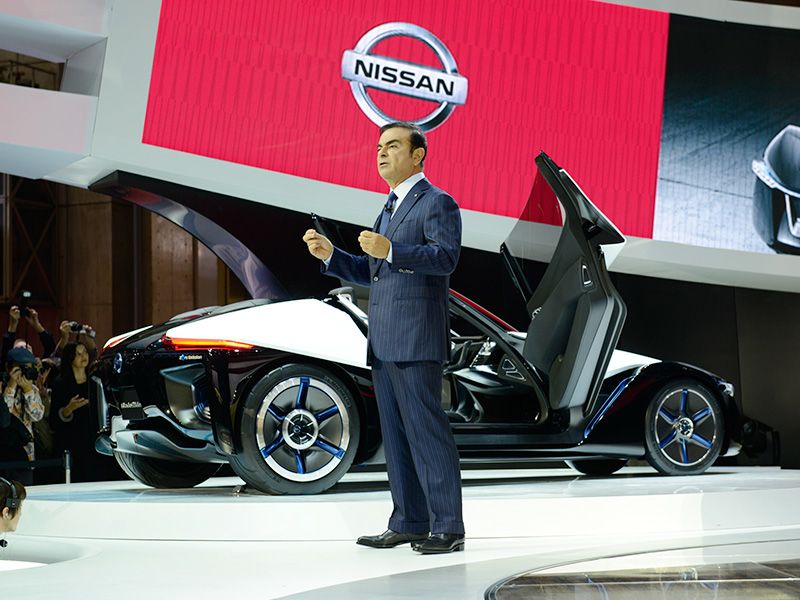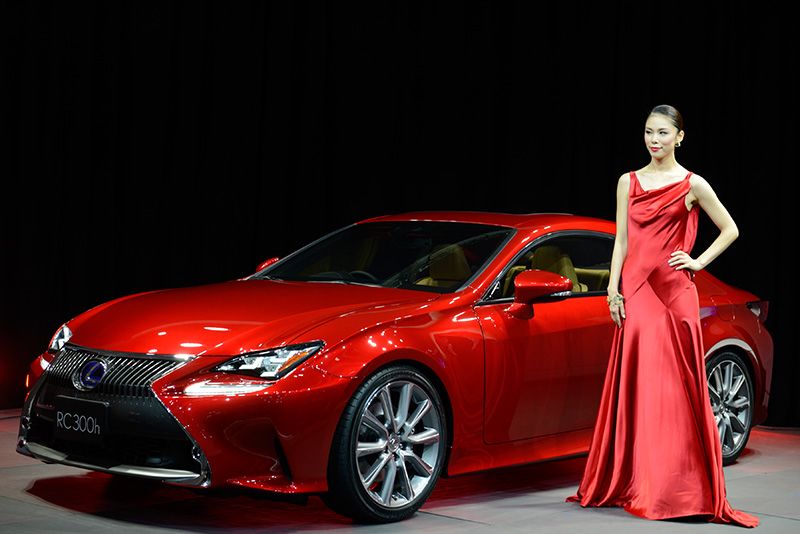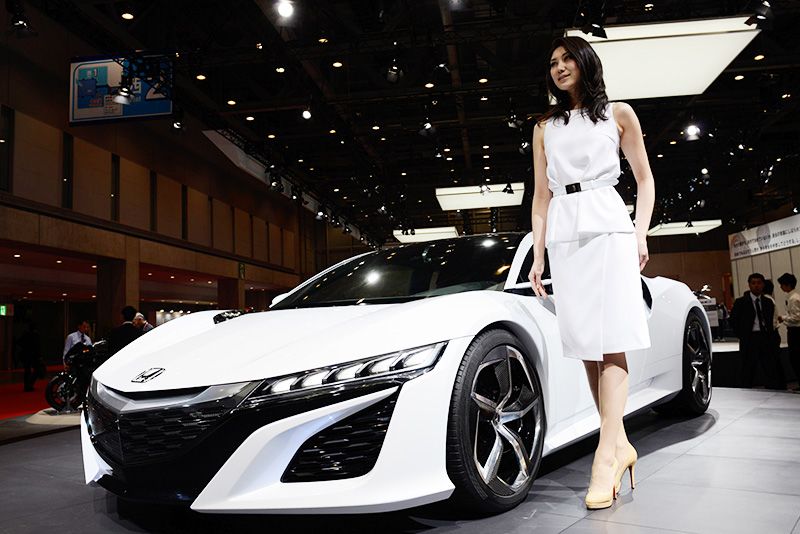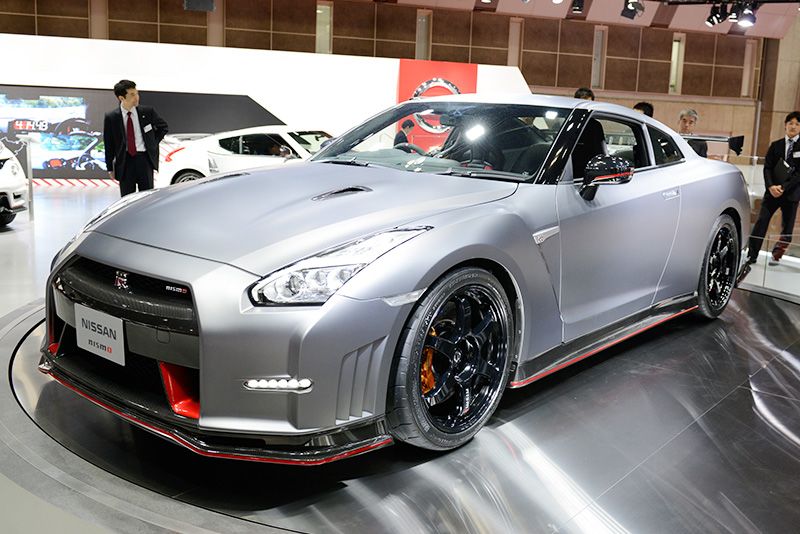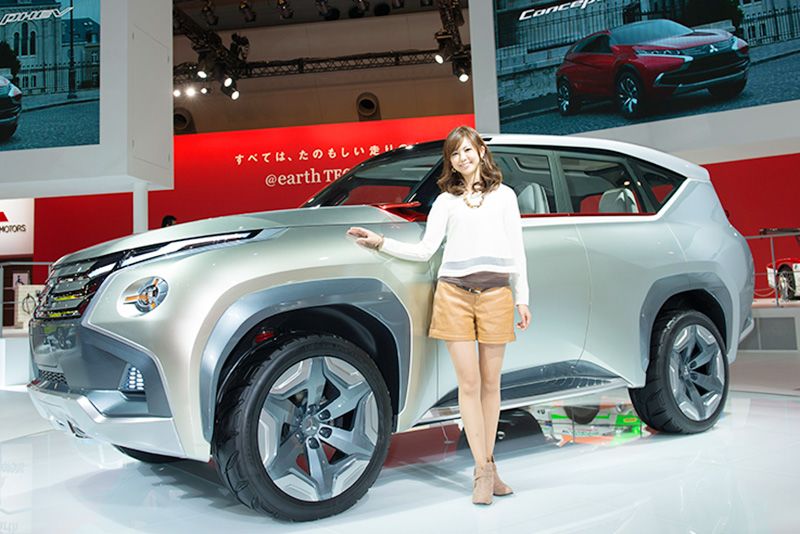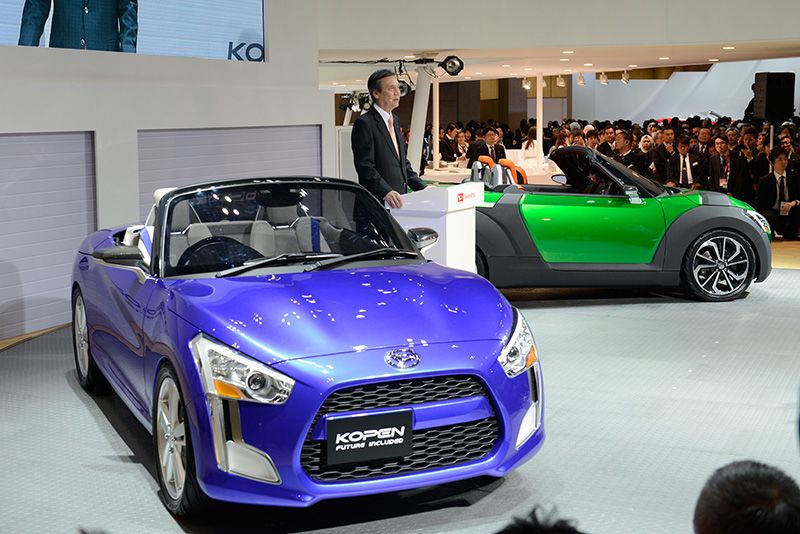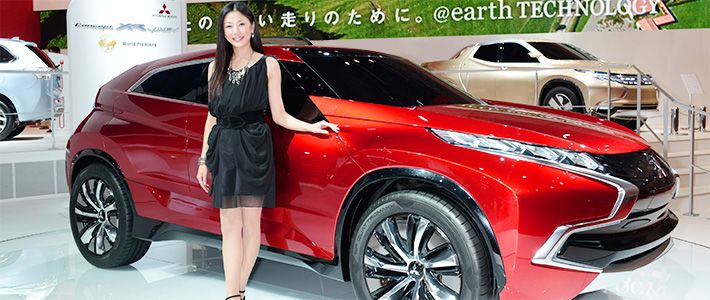
Eco-Cars and Sports Cars Among the Highlights at the Tokyo Motor Show
Guideto Japan
Science Technology Society Culture Lifestyle- English
- 日本語
- 简体字
- 繁體字
- Français
- Español
- العربية
- Русский
Race to the Future
The 43rd Tokyo Motor Show opened on November 20 at Tokyo Big Sight. The show was a chance for Japanese and foreign automobile makers to display concept cars featuring the latest technology and new models planned for sale. The slogan this year was “Compete! And shape a new future.” In all, 177 companies and organizations from 12 countries took part; 426 cars were on display. The show was open to the public from November 23 to December 1.
There was certainly no shortage of innovative cars for fans to discuss. One of the hallmarks of this year’s show was eco-friendly cars. Competition is fierce in the rapidly growing green market, and there were large number of electric vehicles (EVs) and fuel-cell vehicles (FCVs) on display. There were also quite a few new sports cars and sports utility vehicle models aimed at young people. The message from the manufacturers is clear: the sports car is back.
This year, world premieres were up 40% from two years ago: 76 cars in total. With the Japanese economy looking up, foreign makers are pushing hard to increase sales in the local market. Many chose to launch their latest models at the show, making for an atmosphere of excitement and anticipation throughout the week. Although most American and Italian manufacturers decided not to attend, Sweden's Volvo returned, and the young American EV maker, Tesla Motors, made its first appearance.
All Eyes on Japan Again?
The Tokyo Motor Show is generally considered one of the top five motor shows in the world, but the number of participating car makers and visitors has been down in recent years. That reflected a general weakness in the Japanese market caused by a number of factors: the global financial crisis, the Tōhoku earthquake and tsunami of March 2011, and the rapid expansion of new markets in China and other emerging economies. Young people in general seem to be less interested in cars than previous generations. But Toyoda Akio, president of Toyota and chairman of the Japan Automobile Manufacturers Association, which organized the show, said this year was “special.”
With the domestic economy now starting to grow again, the eyes of the world have started to turn back to Japan—especially since Tokyo was chosen recently to host the 2020 Olympics and Paralympics. Between January and October this year, 8.6 million foreign visitors came to Japan. That is already more than visited in the whole of 2012, and close to the government target of 10 million by year's end.
A number of shows recently have highlighted the innovations that continue to be made in Japan. In early October, CEATEC JAPAN introduced the latest breakthroughs in advanced electronics. This was followed in mid-October by the ITS World Congress Tokyo, an intelligent transport systems event. As Toyoda Akio put it: “Information technology from Japan has been having a major global impact” this fall.
FCVs and EVs Compete for Pole Position
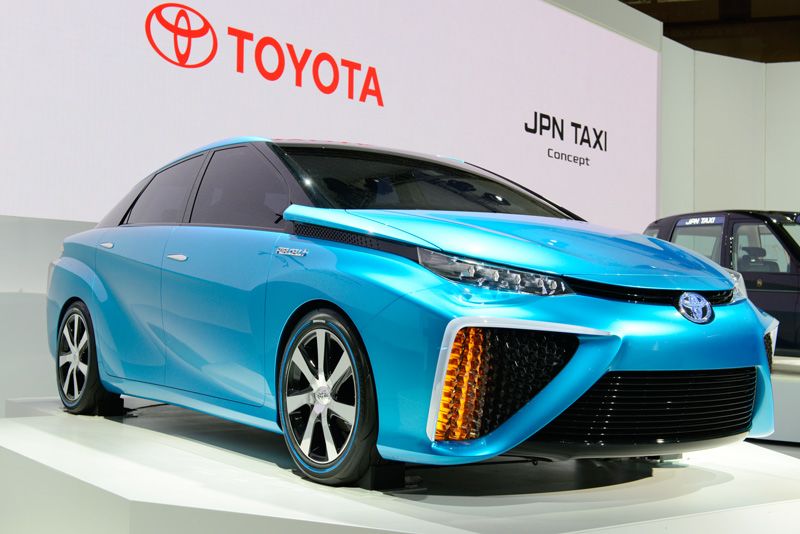 Toyota's Fuel-Cell Vehicle Concept
Toyota's Fuel-Cell Vehicle Concept
Toyota held a world premiere of their fuel cell powered “ultimate eco-friendly car,” the FCV Concept. An everyday-use sedan, it has newly developed compact and lightweight fuel cells, and two high-pressure hydrogen tanks under the chassis. The car draws in air at the front, emits nothing but water from the back, and can travel 500 kilometers on a three-minute hydrogen refueling. Toyota hopes to have the car on the market in 2015. One issue will be fueling—how quickly can automakers get an infrastructure of hydrogen refueling stations in place? Honda also aims to roll out an FCV the same year.
Meanwhile Nissan, which has been focusing its eco-efforts on electric cars, world premiered the BladeGlider, its next-generation EV concept. The vehicle was inspired by the radical idea of creating a car that would “drive the way a glider feels to fly.” At a press briefing, Nissan CEO Carlos Ghosn talked up the EV as a fun-to-drive vehicle. Its striking styling includes a front that is only 1,000mm wide, a 1,890mm rear, a driver's seat in the center of the chassis, and two passenger seats behind. Nissan is currently evaluating the commercial potential of a similarly styled car.
Again, easy access to recharging stations will be essential if EVs are ever to become truly mainstream. FCVs and EVs are competing for the lead in the eco-friendly car race, and are likely to provide talking points for a long time to come.
Toyota and Honda both held world premieres of single-seater concept cars. Toyota's FV2 revolutionized conventional vehicle design thinking with a futuristic model that can be intuitively driven by the driver shifting his or her weight. Honda's UNI-CUB also used balance steering technology for a new “personal mobility” vehicle controlled by the weight of the driver.
Sports Cars Are Back
One of the most striking things about this year’s show was the sheer number of sports cars on view. Lexus premiered a sports coupé prototype, the Lexus RC. Two models were on display: one with a 3.5 liter gasoline engine, the other with a 2.5 liter hybrid engine. Honda's next-generation sports car, the NSX Concept, has a direct injection V6 engine coupled to three electric motors. The front wheels of the car can be turned independently using motors, allowing the car to take corners at much higher speeds than was previously possible.
Nissan unveiled a special edition of its GT-R sports car, the GT-R Nismo. International automakers were also on hand to show off their latest innovations. BMW brought its mid-size couple prototype, the Concept M4 Coupé, which has a light-weight chassis thanks to its carbon-fiber reinforced plastic roof. Mercedes Benz displayed its two-door coupé prototype, the Concept S-Class Coupé.
New Sporty Light Vehicles
Automakers also brought unusual eco-friendly cars and advanced light vehicles. Among the eco-cars were the world premieres of Mitsubishi's three next-generation large SUV concepts. The Concept GC-PHEV is a high power plug-in hybrid that combines the long-distance range performance of a gasoline engine with the eco-friendly attributes of an electric car.
Light vehicles account for 40% of car sales in Japan. There were some innovative new models on display in this category, catching the eye with sporty features and an emphasis on design. Suzuki's Crosshiker concept is a one-liter displacement hybrid that at just 810kg weighs only as much as a light vehicle. An impressive array of new features, including a system that recharges the battery using energy from the wheels during deceleration, gives the car improved fuel efficiency. The highlight of Daihatsu's booth this year was their light vehicle sports car, the Kopen. Aimed at young drivers, the car boasts a number of attractive features. Many aspects of design, including color, can be customized after purchase.
In addition to their new sports tourer, the Levorg, Subaru introduced six cars at the show, including two world premieres. Mazda also introduced a number of cars, including their new hybrid model Mazda3 (known as the Axela in Japan) and the Mazda3 Skyactiv-CNG Concept, powered by compressed natural gas.
(Original Japanese article by Harada Kazuyoshi. Photographs by Kodera Kei.)
Mitsubishi environment eco-friendly Tokyo Motor Show Daihatsu Nissan automobiles Honda Toyota Eco-car car auto sports car Lexus Subaru automakers motor electric car
